Christina L. Simms, Conservator of Objects and Sculpture, and Jim Gwinner, Conservator of Public Art and Sculpture, of McKay Lodge Conservation Laboratory recently performed a conservation treatment of a glass fiber optic artwork, River of Light by Mikyoung Kim, located in Wheeling, West Virginia.
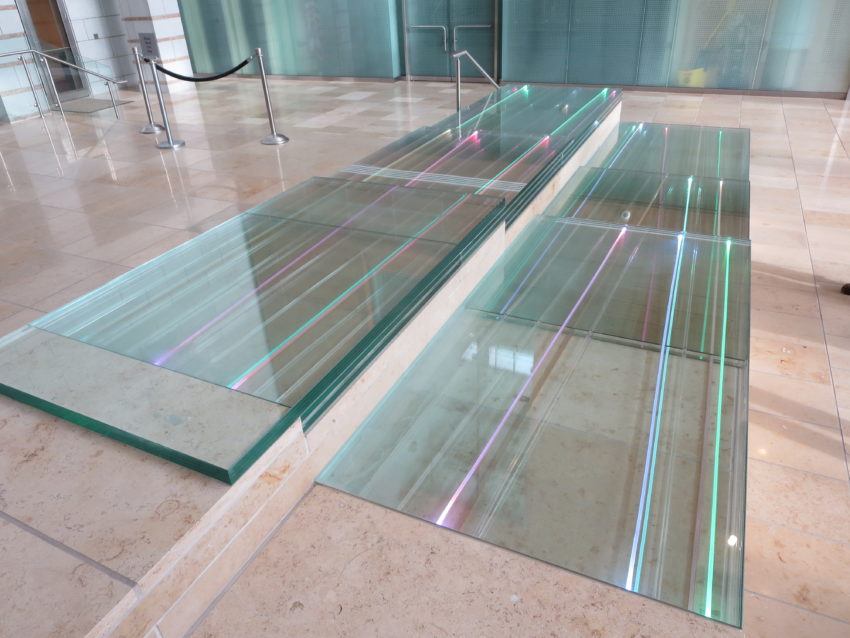
The city of Wheeling is located on the Ohio River. The Ohio River winds its way from Pittsburgh to the southern tip of Illinois, creating the southern border of Ohio along the way. The river once served as an important commercial route in the 1800s, and one of the major industries during that time period was the glass industry in West Virginia. The West Virginia glass industry continued well into the 1970s, and the Ohio River is still used today to transport items like coal and grain.
This history inspired the glass and fiber optic artwork River of Light, 2004 by Mikyoung Kim which is installed at the Federal Building and US Courthouse in Wheeling, West Virginia. The piece is meant to recall the moving currents of the nearby Ohio River and the West Virginia Glass industry.

River of Light (Fluid Light) consists of two tiered sections composed of alternating layers of laminated glass sheet and acrylic enclosures with embedded fiber optic strands. The artwork is installed on a stepped limestone podium in the main lobby of the building. Colors of the fiber optics shift from blue to green to violet, but some of the tube inclusions do not reflect light. Yet, even artworks made with modern materials age over time and develop condition issues, eventually requiring conservation intervention.
The conservation treatment of the fiber optic artwork required some additional research beyond the initial condition assessment which revealed inherent vices. Some of these condition issues included inevitable signs of aging like discolored or leaching plastic components were observed, but the primary concerns were fogging glass and failing lighting equipment.
The “fog” is caused by an adhesive failure of the laminated panels on some of the glass. While it is believed that this is a condition issue related to the fabrication process and natural deterioration, the condition could have been accelerated by high humidity.
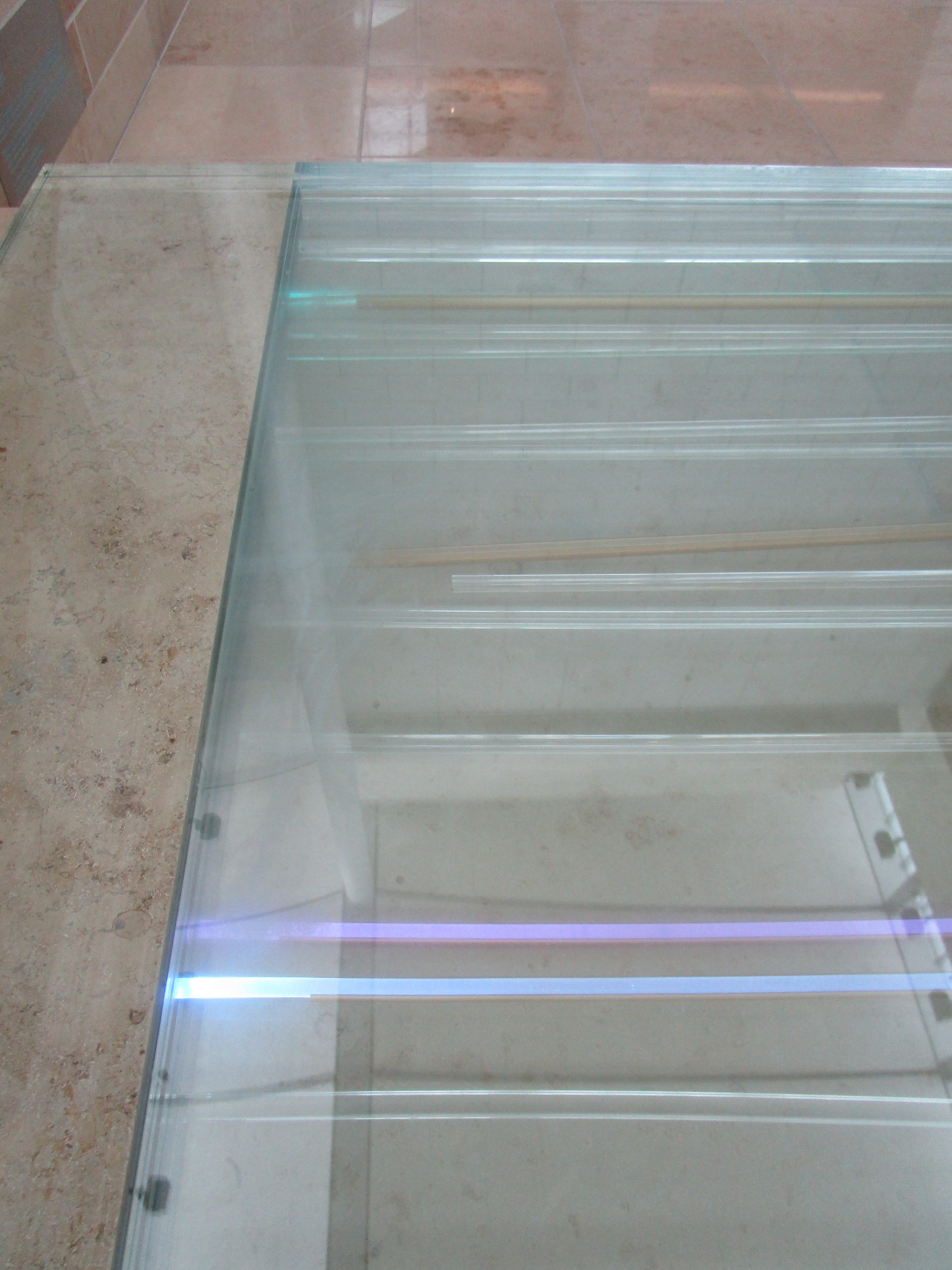
The other primary condition issue is the failure of the lighting equipment or metal halide illuminator units. These units are basic motors with a light and dichroic glass color wheel which in turn light the fiber optic strands with different colors.
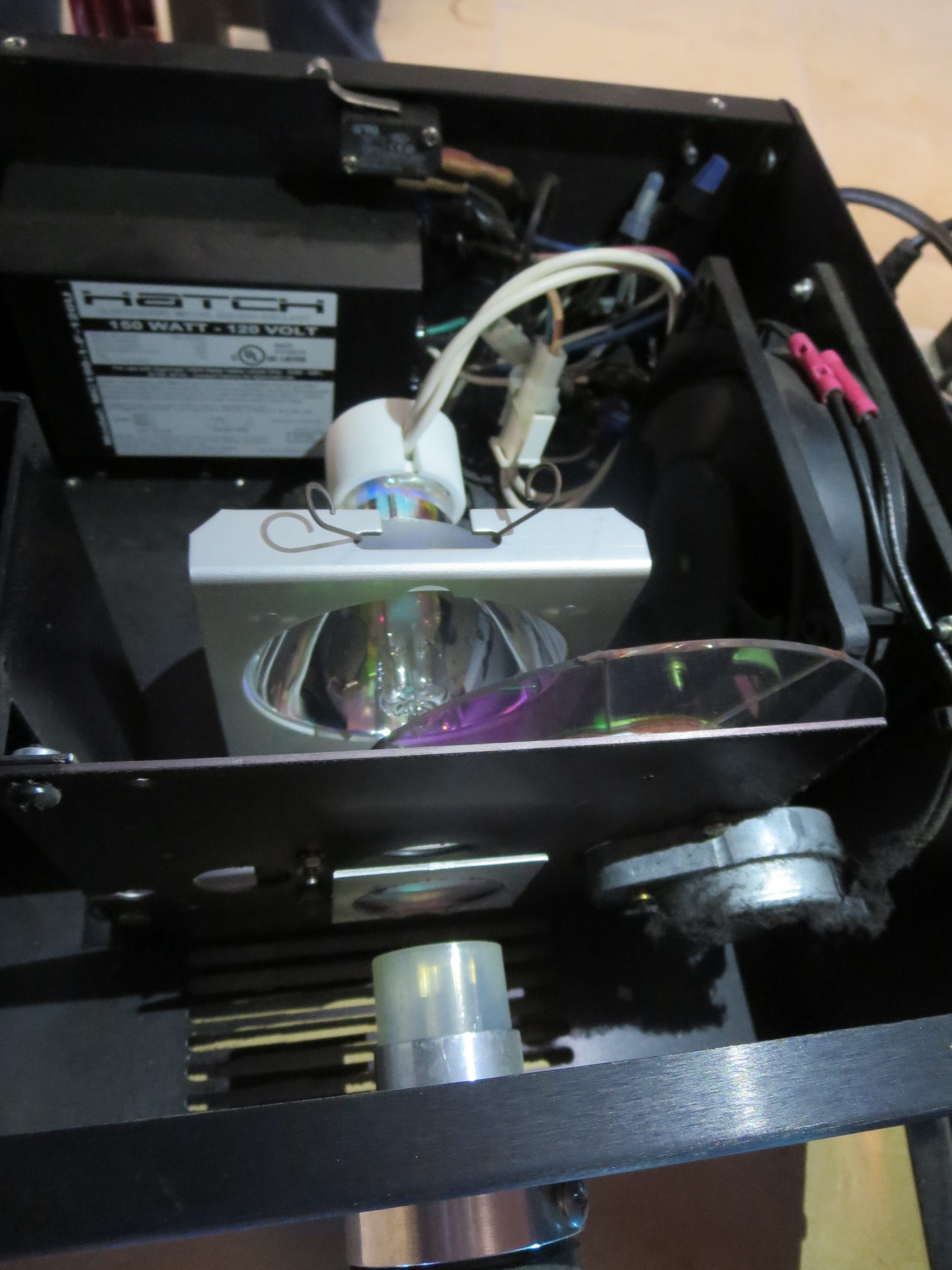
The units were either semi-functional or completely failed at the time of the assessment, meaning that not all fiber optic strands were lit as intended. Failure of the illuminator units is expected since any piece of equipment has a limited service life.
Since the artwork had drifted from its original appearance, it was evident to conservator Christina L. Simms that in order to perform the conservation of the fiber optic artwork, she must contact the artist. Conservator Simms was grateful that the artist and her associate of Mikyoung Kim Design, were able to respond to questions regarding the original artist’s intent, intrinsic characteristics that must be maintained to keep the artwork in working order, and how to address future preservation concerns. These responses from the artist guided the conservation treatment of the fiber optic artwork.
Though it was generally deemed unacceptable for the glass have any fogging or haze, the only treatment solution was to completely replace the glass. Since only some of the panels had this condition issue and the glass was mostly clear overall, it was decided to not replace the glass at this point.
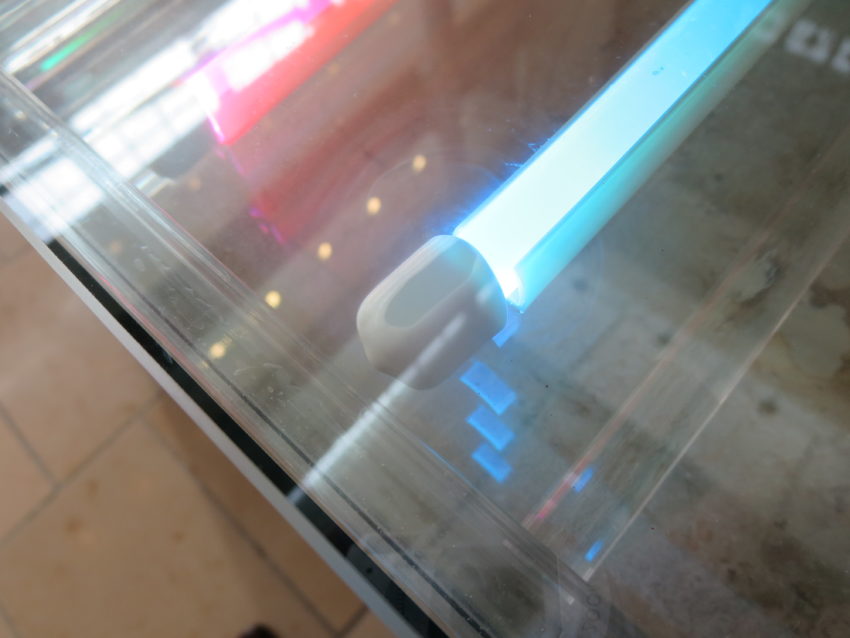
The issue of the of the failing lighting components was more complicated; the original illuminator units were now obsolete and the original manufacturer was no longer in business. The artist preferred that, provided the brightness level and color scheme was maintained, the metal halide illuminators unit were updated to a LED illuminator unit.
This was also preferred by the conservators since the available LED units allowed for greater customization and a longer service life. There was some concern that the LED units best suited for this application might not match the brightness level of original 150-watt metal halide unit; testing onsite was therefore necessary for the treatment of the fiber optic artwork.
Based on manufacturer specifications, the new units were virtually the same as the obsolete model. Conservators Simms and Gwinner still tested both LED and metal halide illuminator units onsite before completing the conservation of the fiber optic artwork.
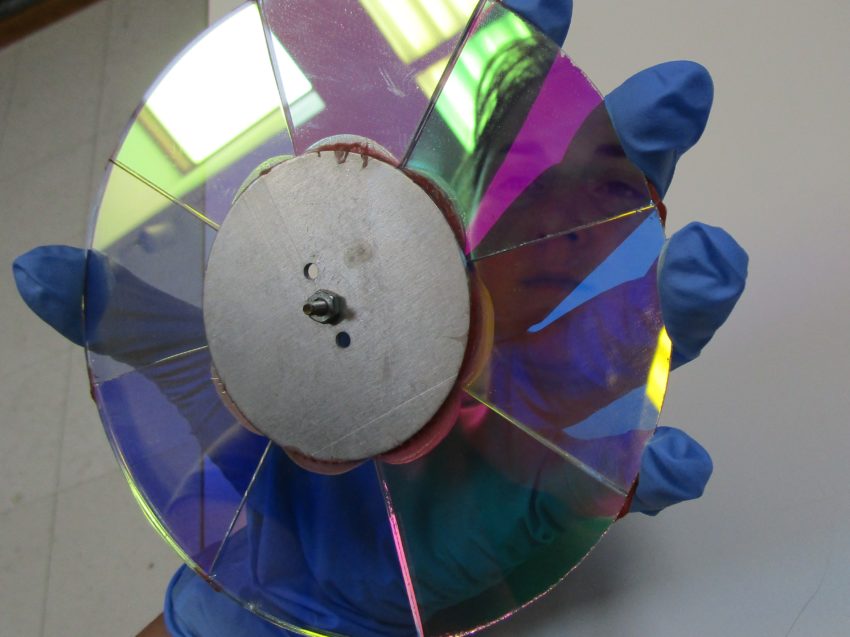
Testing ensured the brightness level and color temperature as well as the cool analogous color scheme was maintained. In order to ensure the best color match possible, Conservator Simms took the original color wheel, which did not fit into the updated illuminator units, and matched the colors with LEE dichroic filters.
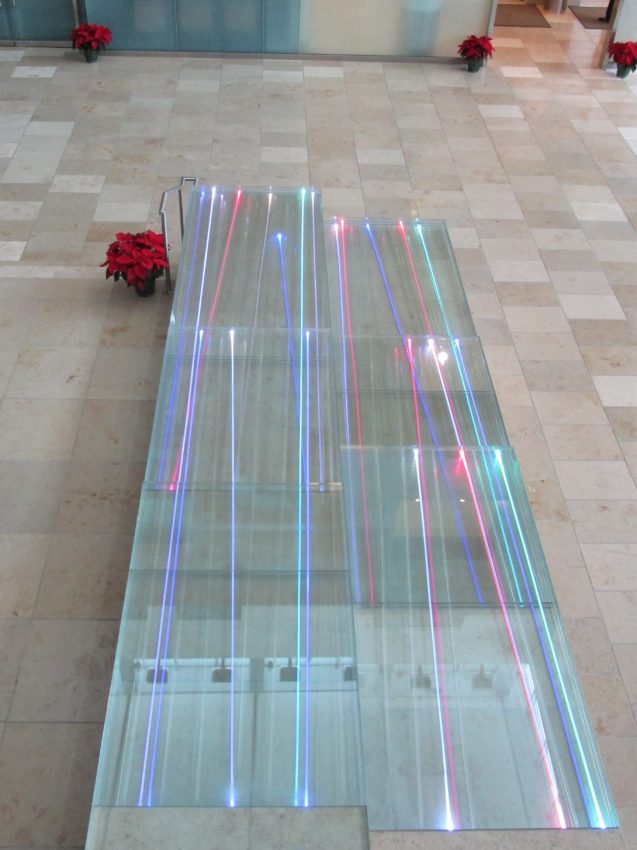
In this way, despite having updated LED units, the artwork still functioned as it did when it was first installed in 2004. The only significant change during the conservation of the fiber optic artwork is the light source, which still matches the lumen output, temperature, and colors of the original metal halide units.
Conservator Simms also repaired a chip in the glass as well as an area of failing caulking.
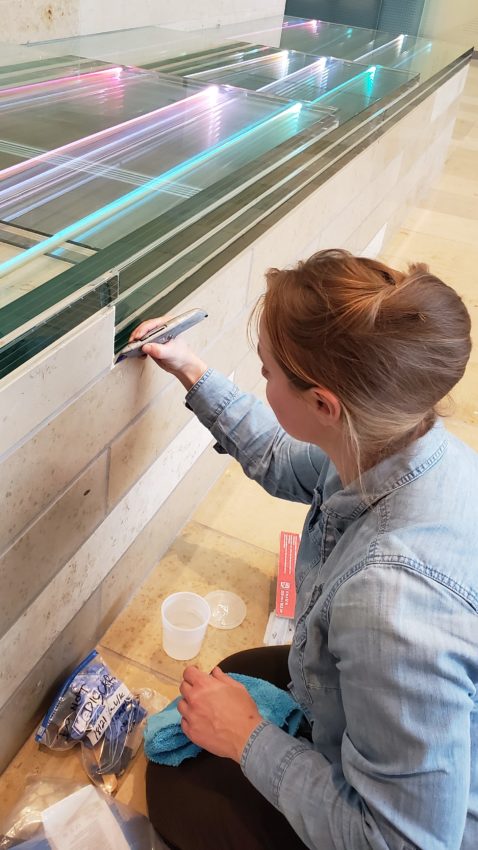
After the conservation treatment of the fiber optic artwork, it is fully illuminated once more, and the artwork is especially striking in the dim light of winter. When standing in the atrium of the Federal Building and US Courthouse in Wheeling by River of Light, one can imagine the rich and varied colors of glass tableware, bottles, and flat glass produced in the surrounding region as well as the gentle transition of light mimicking the currents of the Ohio River that flows just blocks from the building.

